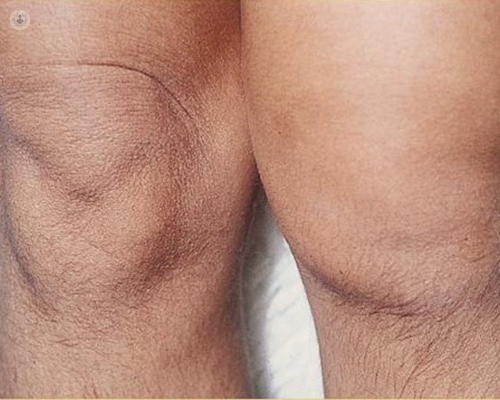Why get a partial knee replacement?
Escrito por:As we get older, our knees might start to suffer due to arthritis and other conditions, and a knee replacement might look inevitable. However, there are alternatives to the total replacement procedure. Leading Manchester orthopaedic surgeon Mr Winston Kim is here to explain partial knee replacements and their advantages.

What is a partial knee replacement and how does it differ from a full knee replacement?
Partial knee replacement is a procedure where only the affected and damaged part of the knee is replaced, preserving the rest of knee joint. Many patients who are offered full knee replacement are candidates for partial knee replacement. It is less invasive, preserves bone, allows a minimally invasive approach to the knee, and is associated with quicker recovery, less pain after surgery, and a quicker return to work and day-to-day activities compared to a full knee replacement.
Who needs a partial knee replacement?
Patients with localised knee arthritis who have had failed non-operative treatment, such as physiotherapy treatment and painkillers, are ideal candidates. Patients wish to be pain-free, active, and have a procedure which is not as invasive as a full knee replacement, with a quick recovery time.
How does the procedure work?
Mr Kim pioneered robotic-assisted partial knee replacement in the North of England, and has performed the largest number of these procedures thus far in the North. He performs partial knee replacement with robotic assisted technology (MAKO/Stryker or NAVIO (Smith & Nephew)). Robotic-assisted technology allows a more precise and accurate implantation of the prosthesis tailored to the individual patient. This cutting-edge technology reassures patients that they have a partial knee replacement that is fitted according to their individual anatomy, to their size, shape and alignment, and reassures patients in relation to the technical approach to surgery.
What are the risks and complications?
The potential risks of partial knee replacement are similar to any joint replacement surgery where an implant is inserted into the body. These risks include infection, stiffness, clots (thrombosis), medical, anaesthetic, and re-operation risks. There is a small risk that patients are not fully happy with the procedure in terms of the operation not meeting their expectations. There is a chance that the patient will need a revision or a full knee replacement in the future. It is important, therefore, to have a full and detailed discussion with your surgeon prior to consenting to a partial knee replacement.
How long is the recovery?
Studies and audits have shown that patients who undergo partial knee replacement recover much quicker than a full knee replacement. 80% of patients are able to return to work 5-6 weeks after a partial knee replacement. It is anticipated that between 6-9 months after partial knee replacements, patient have a significant chance of “forgetting” that they had a partial knee replacement i.e. a natural-feeling knee. Patients are mobilised the day after surgery; they would typically be in hospital for three days. Patients are able to drive after 3-4 weeks.
For more information or to book an appointment, visit Mr Kim’s Top Doctors profile.


